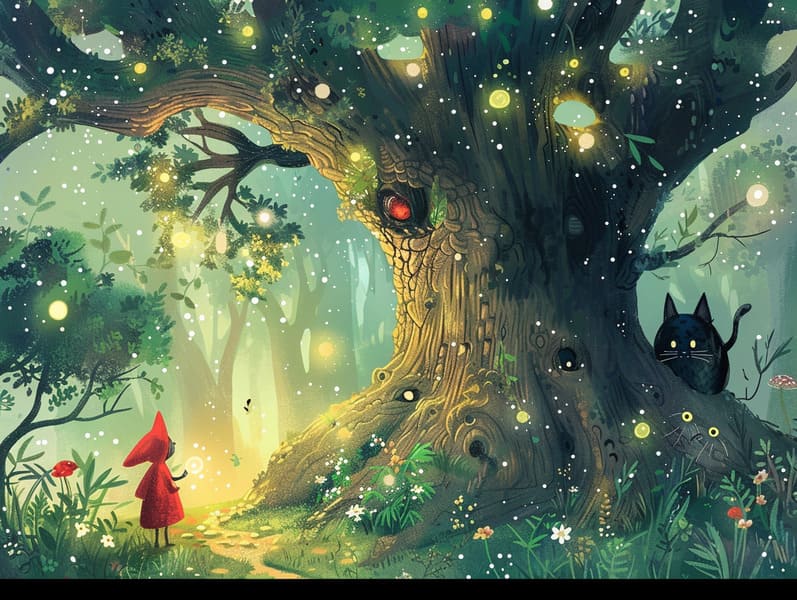Tracing the Heritage of Children's Fairy Tales and Its Eternal Spell.
Tracing the Heritage of Children's Fairy Tales and Its Eternal Spell.
Blog Article

Timeless fairy tales have long histories. These tales have been relayed from one generation to the next long before they were ever put on paper. They developed from a variety of civilizations, including Eastern traditions. They were initially narrated among grown-ups, often carrying themes and messages concerning the societal norms and beliefs of the time.
The famous Grimm duo, Jacob and Wilhelm, were among the first to assemble many of these beloved narratives. Their published works, "Grimm's Fairy Tales," included classics like "The Little Glass Slipper," "Little Brother and Little Sister," and "Snow White," which have since become pillars in the world of iconic fairy tales. Similarly, Andersen's delightful tales, such as "The Sea Maid," and "The Duckling that Could," have captivated hearts worldwide, cementing their place in the pantheon of treasured fairy tales.
Though they are old, these tales remain as pertinent as ever, especially as kids' bedtime tales. These fantastical tales are now available in different formats, including vibrantly illustrated books, magical animations, and online storybooks.
Their lasting presence can be ascribed to several captivating elements:
Moral Lessons: Timeless fairy tales often provide important moral lessons. Narratives like "The Shepherd Boy and the Wolf" teach the benefit of truthfulness, while "The Tortoise and the Hare" exemplify the virtues of persistence and unassuming nature. These tales offer children clear distinctions between right and wrong, molding their moral compass in a soft yet meaningful way.
Empathy and Awareness: Classic fairy tales frequently feature heroes facing problems and hurdles, provoking young readers to relate with their struggles and celebrate their triumphs. For instance, "Beauty's Beast" shows us the benefit of valuing inner qualities to comprehend the true being of a character, enhancing awareness and knowledge.
Cultural Awareness: Many fairy tales are deeply ingrained in the cultural contexts from which they bloomed. Learning from these tales can provide captivating looks into different societies, nurturing a sense of world respect and acknowledgment.
Creativity and Fantasy: The enchanted elements in timeless fairy tales—enchanted forests—trigger children’s creative minds. These narratives take readers to fantastical realms, revitalizing imaginative ideas and a sense of magic that persists a lifetime.
Timeless fairy tales are not only magical but also edifying. They serve as entrancing tools in advancing various cognitive and affective skills in kids. When classic fairy tales are told out loud, they improve speech development by presenting new words and complex sentence structures. This practice also promotes auditory perception and mental focus, as young ones keep up with the story, eager to see what happens next.
Furthermore, discussing the themes and characters of classic fairy tales can improve reasoning skills and critical thinking. The young are educated to identify patterns, predict happenings, and comprehend cause and effect. These discussions also further children voice their thoughts and feelings, strengthening their emotional intelligence.
In today’s high-tech era, the abundance of digital fairy tales has made these fairy tales more available than ever. Web-based platforms and online apps supply vast collections of old fairy tales that can be perused or played anytime, anywhere. Fairy tales spoken are particularly liked, offering an captivating way for young ones to savor these delightful tales. Narrated books and read-out-loud stories move characters and settings to life, often augmented by fantastical sound effects and musical scores that enrich the story journey.
The timeless fascination of ancient fairy tales lies in their ability to adjust to the present while preserving their basic principles. Contemporary revisions of these narratives often show more multicultural protagonists and modern settings, making them accessible to today’s audience. However, the fundamental themes of courage, kindness, and truth remain unchanged, continuing to strike a chord with young listeners of all ages.
Ancient fairy tales also offer a sense of security and comprehensibility. They disclose a coherent narrative with a apparent beginning, middle, and end, often ending with the wrap-up of conflicts and the triumph of morality over immorality. This reliability can be consoling for young ones, making available a sense of sturdiness in an unpredictable world.
Old fairy tales continue to entrance and educate new generations, maintaining their grandeur and pertinence in modern society. As nighttime stories for kids, they bestow a perfect blend of delight and instruction, furthering moral values, empathy, and creativity. The proliferation of internet fairy tales and the likability of fairy tales read out loud certify that these classic fairy tales remain acquirable to new generations.
By maintaining and relating these fairy tales, we continue to treasure the rich tapestry of folklore check here and cultural heritage. Whether you are browsing a vibrantly illustrated book, seeing a virtual collection, or hearing an narrated book, the grace of timeless fairy tales is always within reach. These stories teach us of the unceasing spell of fairy tales and its ability to bring us together across centuries and lands.
Whether you are reading a gorgeously illustrated book, browsing a internet collection, or listening via an sound book, the elegance of children's fairy tales is always within reach.
These tales convey of the timeless force of tales and its ability to gather us across centuries and lands, creating a bond that delights and instructs alike.